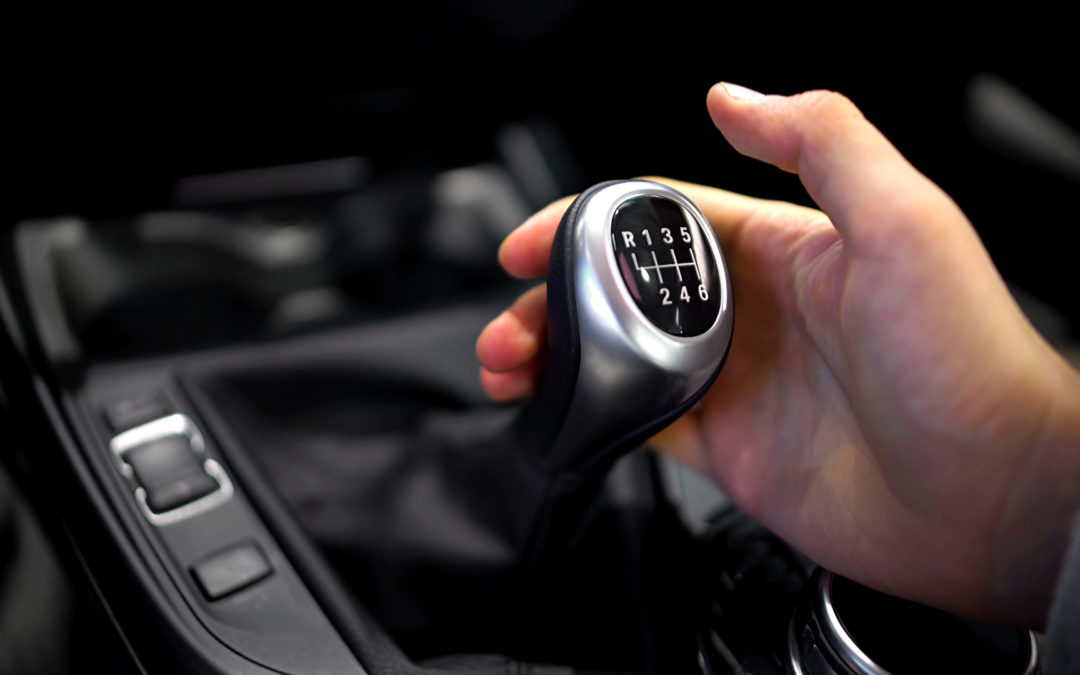Driving a car with a manual transmission is simple once you get the hang of it. It’s a popular misconception that driving a stick shift is challenging or as intimidating to learn as people assume.
Experienced drivers who began on an automatic transmission might indeed find the process of learning tedious. However, that’s only because they expect it to be complicated. In reality, driving with a manual transmission is simple and intuitive.
Once you learn the basics of operating a stick shift, driving a manual transmission car becomes easy. Furthermore, advanced techniques and increased precision can help you become a better driver.
Any manual driver will tell you that, with practice, techniques like heel-toe downshifting and double-clutching make their driving experience more fun, engaging, and exciting.
How to Drive a Stick Shift
There are different ways to drive a car — and we’re not just speaking about driving habits. Vehicles have manual, automatic, or “variable” transmissions.

The average driver often opts for an automatic transmission, but, technically speaking, it’s an “upgrade.” All new car builds start off with a manual transmission, and if you know how to drive this type of vehicle, you’ll save a few bucks and potentially enjoy driving more.
Let’s dive right into the process.
Step #1. Start the car and shift into neutral
To start your stick shift, press the clutch all the way down with your left foot. Then, start the car as you usually would, with your right foot on the brake, while you turn over the ignition.
Make sure to release the parking brake (and always have the emergency brake engaged when your stick shift is parked, even on completely level surfaces).
Next, put the gear shifter in neutral with your right hand. Neutral is the area between the gears that’s typically represented by the long horizontal line on the gear shift knob. Once the car is in neutral, remove your foot from the clutch pedal.
Step #2. Depress the clutch and shift to first gear
With the transmission in neutral, depress the clutch with your left foot. Move the stick or lever in the gearshift to the first gear position.
Step #3. Start moving the car
Release the brake pedal but don’t release the clutch just yet. You’re going to do that as you slowly depress the accelerator pedal with your right foot.
Step #4. Depress the gas as you release the clutch
As you let off the brakes, the car will probably start to roll. Begin to apply slow but steady pressure to the gas pedal while letting up on the clutch. Do not accelerate excessively, especially while in first gear.
This is the hardest part of driving your stick shift. Your left foot is releasing the clutch while your right foot is depressing the gas pedal, so it takes time and practice to get used to the motion and build it into your muscle memory. If you fail to release the clutch and accelerate with the right touch, you could kill the engine. If that happens, simply start over at step #1.
While You’re Driving a Stick Shift: Shifting Gears

As you let up on the clutch pedal continue to press on the accelerator. You have shifted into first gear and are building speed. Depending on your vehicle, you can use the sound of the engine, your RPM gauge, or your speedometer to determine when to shift.
While your car is rolling, press down on the clutch and slowly move the gear shifter into second gear. Keep in mind that you should not be stepping on the accelerator as your shift gears — that will cause you to lose speed. The actions are: release the accelerator, depress the clutch, and shift.
Once you’ve successfully shifted into second gear, let go of the clutch and press the accelerator to keep driving at a steady speed. This motion will be just like the one you used to shift into first.
When slowing down and going into a lower gear, you want to avoid abrupt deceleration. Downshifting before slowing will help you avoid this sudden slowdown. Simply apply the same process as shifting up by letting go of the gas, pushing the clutch, and moving the gear shift.
Conclusion
Driving stick shift vehicles is straightforward, but that doesn’t mean it won’t take practice and patience. Over time, you’ll develop a feel for your car’s particular transmission, though you’ll have to reacquire this touch in each manual vehicle you drive.
The more practice you have, the faster you’ll be able to switch gears smoothly and even drive other cars with manual transmissions without an adjustment period.
So far, you’ve learned most of the essentials you need to drive a stick shift. But you’re not done yet. Part three of this series will cover the finer points of driving a stick shift. You’ll learn advanced maneuvers like the heel-toe downshift, and you’ll pick up some important tips for caring for cars with manual transmissions.
Did you know that manual transmissions can help improve fuel efficiency? Visit the DriveSafe Online blog to learn more driving and maintenance tips.

Patrick M. is Editorial Director for the always expanding DriveSafe Online library of courses. With over two decades of experience developing award-winning training, he now focuses on innovating online driver safety training. Pulling from his background in journalism, he steers the wheel behind the creation of top-tier content that promotes a better journey—whether on the digital highway of learning or the real roads we travel every day.
